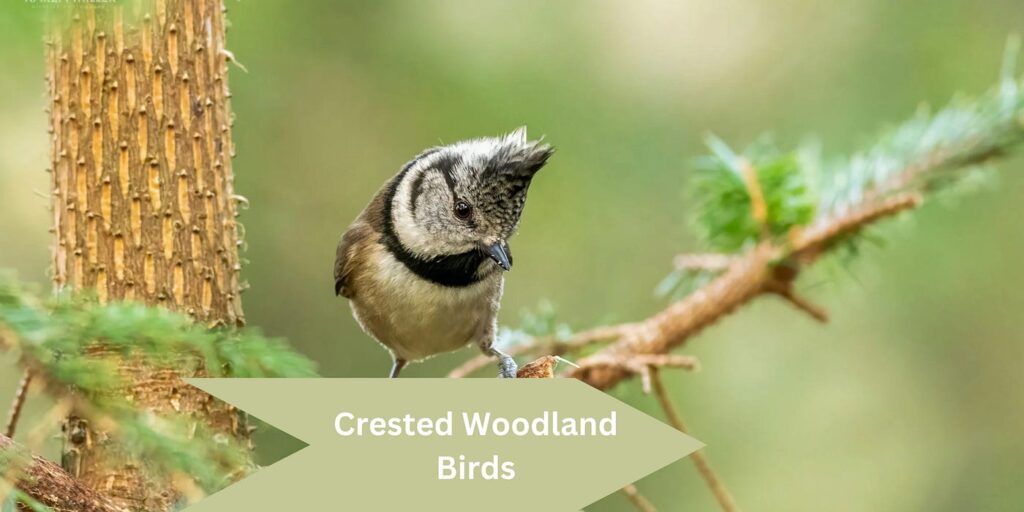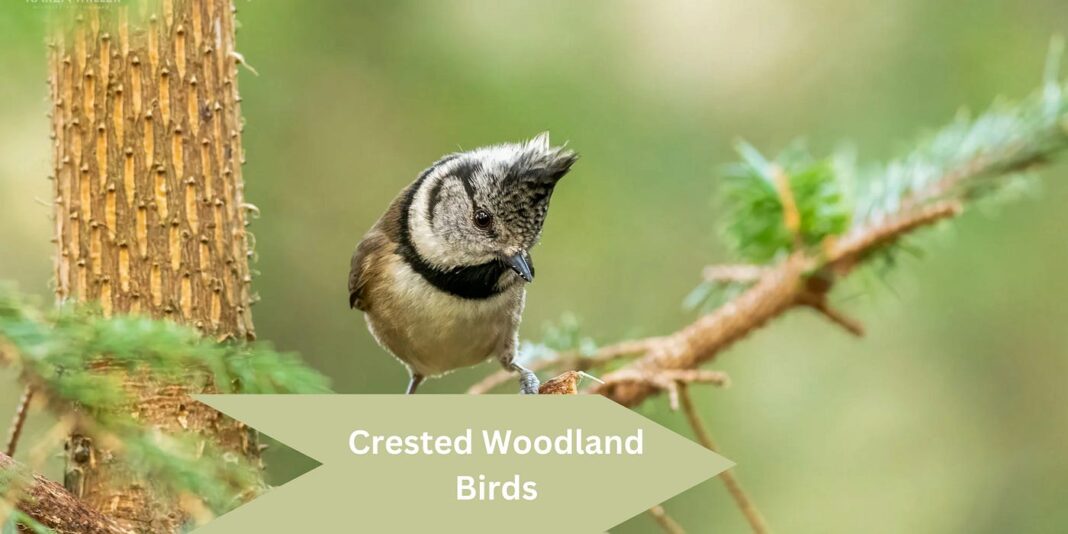The Crested woodland bird” usually refers to any bird found in forest or woodland habitats with distinctive feathers on its head These crests, which can vary in shape and size, are often a special use for communication, demonstration, or camouflage cover. Many famous crested birds can be found in forests around the world.
Examples of forest birds with strong faces include species such as the Crested Tit found in the pine forests of Europe, or the Pileated Woodpecker in the forests of North America, both of which use their upper extremities for display others in their territory.
Birds have consistently entranced people, yet there’s something especially dazzling about peaked forest birds. These avian miracles, embellished with particular peaks, add a bit of tastefulness and interest to the timberland shelter. Be that as it may, what precisely are these birds, and for what reason would it be advisable for us to think often about them? We should dive into the universe of peaked forest birds and reveal their mysteries.

What are Crested Woodland Birds?
Crested woodland birds are a different gathering of bird species described by the presence of a conspicuous peak on their heads. This peak, comprised of quills, can be raised or brought down and frequently fills different needs, from drawing in mates to threatening adversaries. These birds are normally tracked down in lush regions, where their dynamic peaks contrast the lavish green setting.
Habitat and Distribution
Crested woodland birds flourish in assorted territories, going from thick timberlands to open forests. Their inclination for lush regions guarantees they have more than adequate cover from hunters and plentiful food sources. These birds are all around the world dispersed, with species tracked down in North America, South America, Europe, Asia, and Africa, each adjusted to their particular territorial conditions.
Physical Characteristics
One of the most striking highlights of crested woodland birds is, obviously, their peak. These peaks can fluctuate essentially in size, shape, and variety, frequently give some insight to the bird’s species.
Read Also: What You Know Bit of Bird Chatter NYT Crossword?
Other than the peak, these birds likewise show an assortment of plumage tones, from the energetic reds and yellows of certain species to the more repressed earthy colors and greens of others. They range in size from little, sparrow-like birds to bigger, additional impressive species.
Behavior and Social Structure
Crested woodland birds show a scope of ways of behaving and social designs. A few animal types are lone, while others are profoundly friendly, living in groups that can number in the hundreds. Their day to day exercises frequently rotate around scavenging for food, trimming their plumes, and participating in friendly collaborations, which can incorporate energetic pursuing, common dressing, and vocal correspondence.
Crested woodland bird can often live in trees, where they can find shelter, food and nesting sites. They play an important role in the balance of forest ecosystems, in terms of seed dispersal, parasite control and pollination. These birds are generally admired for their attractive appearance and interesting behavior, making them attractive to bird watchers and nature lovers.
Dark peaked Titmice wander forests in little gatherings, frequently with other forest birds, searching for little spineless creatures and seeds. They are as a rule in the internal part of trees, normally 20 feet or less starting from the earliest stage. They routinely go to patio taking care of stations.
Read Also:
Three subspecies are much of the time perceived, yet the distinctions between them are unobtrusive. The southernmost, atricristatus, goes from the Rio Grande Valley of Texas through quite a bit of focal and eastern Mexico; it has dull dark flanks with an olive color.
The westernmost subspecies, paloduro, is found generally from the Huge Twist area of Texas into nearby Mexico; it has dim flanks. The sennetti subspecies goes from southern Oklahoma toward the south to focal Texas. It has paler flanks and a corroded color to the brow.
Quite possibly of the best thing about birds is that they’re all over. (Truly, there are even records of the South Polar Skua at, you got it, the South Pole.) And, surprisingly, however many individuals don’t understand it, they see and hear a wide assortment of birds consistently while approaching their regular routines snatching their mail, outside their work windows, on their morning run, watching their child’s soccer match all over the place.
Yet, regardless of birds being out of control, for a great many people distinguishing them starts and finishes with the Stone Pigeon. This rundown covers large numbers of different birds you are probably going to see consistently, from one coast to another, over time.
The species here should be visible in metropolitan, rural, and rustic spaces, and the greater part regular lawns and feeders. So whether you’re new to the universe of birding or simply need to understand what that little bird in the shrubs is, this preliminary ought to help. What’s more, in the event that it doesn’t, you can visit our web-based field guide or download our free Audubon bird guide application to settle the secret.







